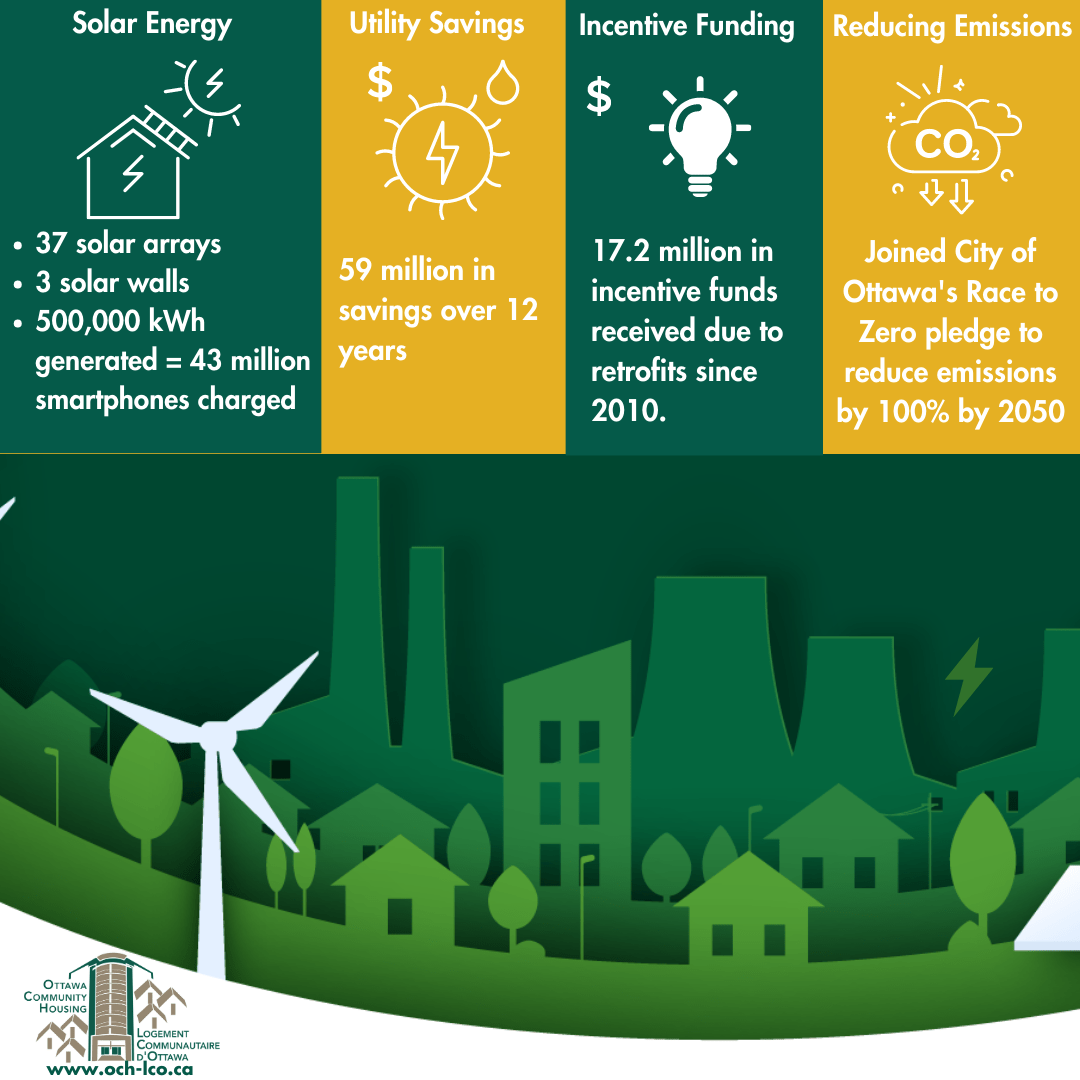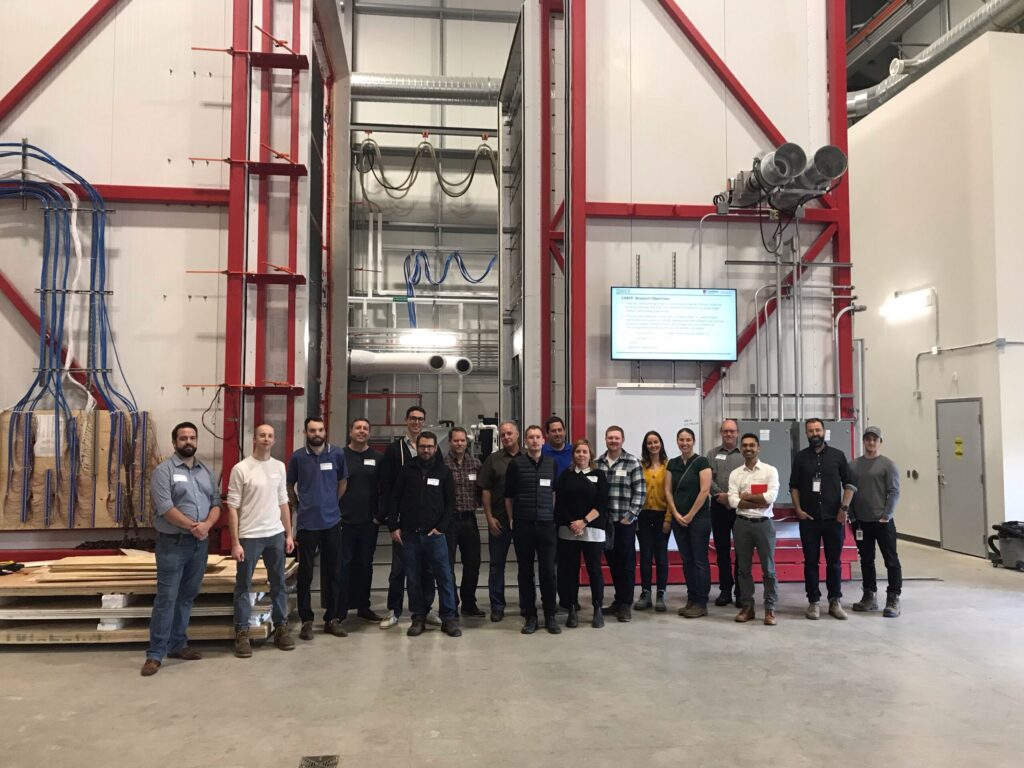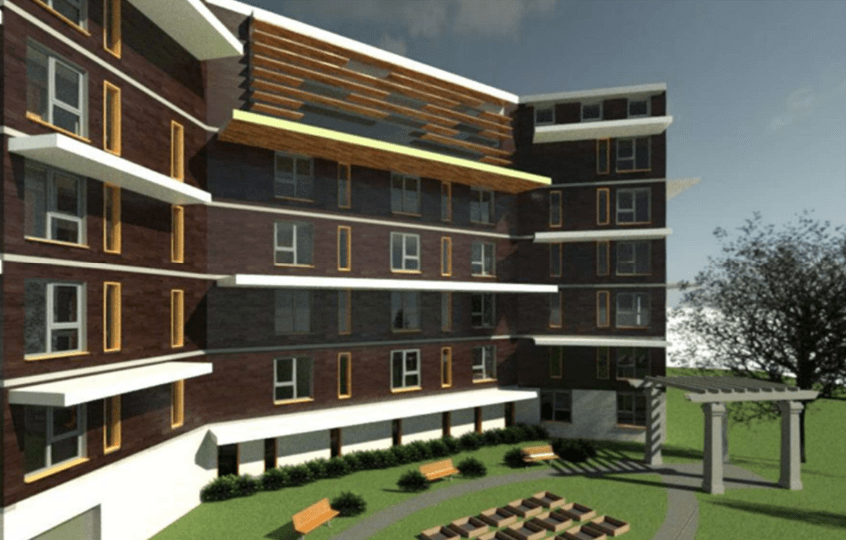Apr 20th, 2023
Green Corner: OCH Works with Partners on Innovative Solutions to Create More Sustainable Communities

Share this story
At Ottawa Community Housing, we know we can’t use the same old formulas anymore when building communities or retrofitting our existing ones.
Our innovative Energy and Conservation team has received national recognition for projects that changed how we look at deep-energy retrofits and new development. They connect with research partners and the next generation of engineers, architects and consultants as part of their work. By working together, we can tackle the housing and climate crises.
Did you know? Space heating in homes and buildings is Canada’s single largest energy use, accounting for 14% of greenhouse gas emissions. That’s why finding efficiency in heating, ventilation and air conditioning systems is so important.
Pushing the envelope
In 2019, OCH began designing new communities that met the Passive House design standard. The first was at 1290 Coldrey – the largest passive house in the country at the time of its construction and later 811 Gladstone. The new standard ensures our buildings are built to be as high performing as possible and reduces our carbon footprint and energy costs. But this type of construction also greatly impacts tenant comfort by lowering drafts from outside (for cold) and inside (for smells) and reducing the sound transfer between units and from the outside. To quantify the positive benefits to tenants, we worked with the Building Energy and Indoor Environment Lab at the University of Toronto. Students visited our 811 Gladstone building while it was under construction and performed air tightness testing and sound transference studies on several units to confirm the positive impact on tenant comfort.
“This is a perfect partnership. OCH gets real performance testing on our building that improves the comfort of our tenants, and the University of Toronto gets an ideal high-performance test subject for their building research that helps advance the construction field. It’s a win-win,” said Dan Dicaire, OCH’s Manager of Conservation and Sustainability.
Working with young minds
We needed a new perspective when faced with a challenging infill project in our Shearwater Community – where we want to turn six townhomes into an apartment building with 45 homes; in addition to space constraints, we are challenging ourselves to find ways to make the new build very energy efficient. For this project, we decided to get some help from the next generation of architects by offering the Shearwater project as a capstone project for a group of 4th-year architecture and engineering students at Carleton. Using the skills and techniques they learned over the past four years, these students took on the mock role of primary consultant and did an entire design, complete with an energy model and design drawings for this project. It’s the perfect partnership because OCH gets some inspiring rendering and ideas for the projects, and students gain real-world experience on an actual project.
In addition, OCH’s Asset Management and Energy and Conservation teams had a chance to tour the new Centre for Advanced Building Envelope Research. The facility opened its doors in 2022 and is a way to test deep-energy retrofits. Housed and funded by Natural Resources Canada and operated by Carleton University, the 3 storey test chamber can simulate all kinds of weather situations and wall assemblies and accelerates degradation – giving researchers a better understanding of how to combat issues like a heating loss. OCH’s new building and retrofitted existing building need high-performance building envelopes, which are fairly new technology to save energy and carbon emissions. With this research facility, we can ensure that the new building envelope our consultants are designing will perform as well and last as long as needed.
“Being a leader in the housing sector requires looking for innovative solutions to ensure that we can preserve our existing homes and build more sustainable new communities. With the pressure of both climate change and the housing crisis – we need to be ahead of the curve and working with our amazing research partners to find solutions adapted to our evolving needs,” said Stéphane Giguère, Chief Executive Officer of OCH.









